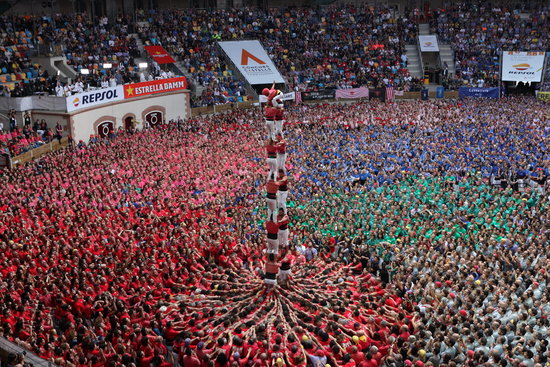Reaching for the sky: Catalonia's human towers
The long-standing cultural tradition recognized by UNESCO is a spectacular sight in town squares all over the country

Declared Masterpieces of the Oral and Intangible Heritage of Humanity by UNESCO in 2010, Catalonia's human towers -or 'castells'- are one of the country's most unique customs.
The tradition first documented in the 17th century sees large groups -known as 'colles'- forming tiers of differing numbers of people standing on the shoulders of those below them.
A human tower is only complete once a child called the 'enxaneta', who can be as young as five, clambers to the very top of the structure and raises their arm.
The towers are a common -and breathtaking- sight in towns squares all over the country, where they are built during local festivals to the sound of traditional 'gralla' flutes and drums.
'Human safety net'
'Castells' will often come crashing down, although the 'castellers' have their own human safety net in the dozens of team members supporting the tower's base, or 'pinya'.
There are 'colles' in towns and cities all over Catalonia that spend months practising at building the tallest and most complex human constructions.
Each 'colla' is distinguished by the color of its shirts, and 'castellers' wear traditional garb of white trousers and a wide black sash around the waist, providing back support and a foothold to help team members climb up or down the tower of people.
'Castellers' also compete against each other, with the biggest event being the Human Tower Competition that has been held every two years in Tarragona since 1952.
The Món Casteller Human Tower Museum of Catalonia (MCC in Catalan) is to be found in the southern Catalan city of Valls, which is considered the birthplace of the tradition.